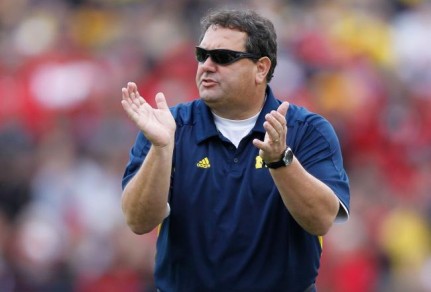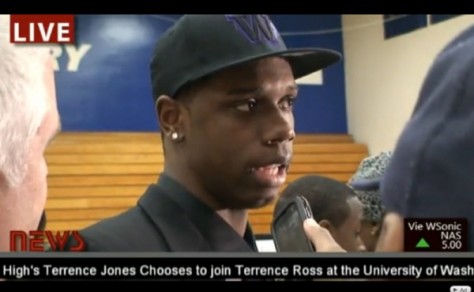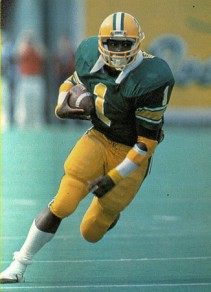In order to comprehend who we are, we must understand where we come from. Such is a brief synopsis of Alasdair MacIntyre’s seminal moral philosophy work After Virtue.
Recently Brady Hoke, Michigan head football coach, went on the record questioning the value and role of the intense media coverage of recruiting. I think MacIntyre’s concepts are apropos here. In order to understand what college football recruiting coverage is, we must understand its evolution.
I am not going to bore people with the entire history of college football; most of you are pretty knowledgeable, generally speaking, about college football’s origins. I am also not going to go in depth into the history of Oregon football. Just about every Duck fan alive knows about “The Pick” and “the Toilet Bowl” and “Captain Comeback.” These are a part of the lore that is Oregon football.
So, how can I analyze Hoke’s comments without a deep resurrection of Oregon football history? I can recount how we got to where we are from a uniquely personal perspective. But I am not going to start at the beginning and work forward; I don’t think the story is best told that way. I believe we should work backwards to see where we started.
Hoke is right, to a degree, there is an enormous amount of information about recruits. When Terrence Jones was deciding where he wanted to go to college, Oregonlive.com had a video that streamed his announcement (he later change his mind about which school to attend) live for all the world to see.
Today, high school seniors routinely have announcement ceremonies at their schools. You know what, though, that is not unique. When Kevin Wilhite committed to the University of Oregon, it was big news. Widely considered the best player in America as a high school senior in 1982, his choice of the Ducks was a signing day surprise.
While Hoke pretends that “stars” and ratings are all some fancy new-fangled invention of the internet age, he is just wrong. In 1982, the Los Angeles Times ran a feature story on Wilhite’s last minute switch from the Huskies to the Ducks. Presumably, the switch was made due to Oregon’s phenomenal track program. The point, though, is that in 1982, recruiting was already a big news item.
The real difference, then, between 1982 and 2012 is not that recruiting news is covered, but how and by whom it is covered. Hoke may have some points in that the coverage now begins when players are sophomores in high school. Recruiting sites call them to ask about their respective schools and try to analyze where these young men may end up playing.
They are assigned “stars” based on what scouts believe is their potential at the college level. Why is it, though, that these sites exist? After all, they don’t exist in some magical glass bubble created for no real reason.
The finger has to go back to the sport itself. College football has been a passion for many people for a long time. The Nebraska Cornhuskers have the ongoing NCAA record of 317 consecutive sellouts; that dates back 50 years to 1962! Oregon’s streak of 79 consecutive sell-outs pales by comparison. The passion of fans was invoked many years ago. But that passion did not invent the current recruiting craze.
In my opinion, the beginning of this craze started in the summer of 1978. That was the summer that ESPN was first conceived. On September 7, 1979 ESPN made its debut to a small number of viewers. The growth of sports and ESPN have coincided. And then college football programs began to see dollar signs in their eyes. Looking to entrench their advantage, powerhouse programs recognized the value of television appearances.
College football has been a long-standing tradition on the American Broadcasting Corporation (ABC). When ABC bought ESPN in 1984, college football was slowly but surely sprinkled onto the network that would come to dominate sports.
With dollar signs in their eyes, athletic directors, with the blessing (and urging) of their coaches, eagerly sought contracts with the burgeoning behemoth. Those contracts were the beginning of what we see today.
As the sport was broadcast and schools had more money from these new contracts, fans began to clamor for more information. Once we had a taste, we needed more. ESPN, after all, broadcasts drafts and analysis of draft picks. Why shouldn’t fans learn about college recruits?
The difference with college football is that it typically involves a rotating cast of players. Unlike professional sports where star players are signed to long-term contracts, college football players have only three or four years playing for the school. Fans wanted to know more about the players. Parade Magazine began this whole thing back in 1963 with their first high school All-American football team selections.
SuperPrep Magazine took it deeper with their foray into the world of recruiting in 1985. So, no Mr. Hoke, this is not a new invention.
As fans began to become more interested in the teams that they were spending money to watch, their natural desire to know more about their team gave rise to the possibility. After the initial internet boom of the late 1990’s, two companies seized on the fans desire and the newly available cheap distribution methods of the internet. And the fans got hooked. We couldn’t get enough.
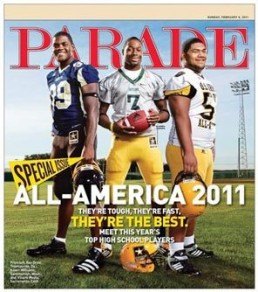 So, what exactly is Brady Hoke’s complaint, that there are media people covering recruiting? Can’t be, that has been going on for decades. That the services “rate” players? That can’t be it either, services have been rating players for a very long time; Parade Magazine has rated players for over 50 years.
So, what exactly is Brady Hoke’s complaint, that there are media people covering recruiting? Can’t be, that has been going on for decades. That the services “rate” players? That can’t be it either, services have been rating players for a very long time; Parade Magazine has rated players for over 50 years.
While he mentions several times that he didn’t need a “star system” to reel in Tom Brady, it becomes clear that Hoke is hedging his bets for the future. You see, right now, Hoke is landing what all three major sites have called the best class in America for 2013, Hoke knows just how fickle fans can be about the topic.
All he has to do is talk to one of his current commits, Logan Tuley-Tillman. For those not knowledgeable about Tuley-Tillman, he is a 2013 commitment to the Wolverines that was recently spotlighted for his burning of letters from Ohio State. Sadly, his actions, though somewhat immature, were met with worse as Ohio State fans taunted him with all manner of threats for his actions.
It is that kind of fickle nature that has Hoke worried about the future. He has been widely lauded for his early recruiting. But there is a new kid in town named Urban Meyer that will also be able to recruit serious talent. In fact, it is very plausible that Ohio State will once again move ahead of Michigan in recruiting rankings in 2014. If that happens, Hoke needs to have distanced himself from the “rankings” of his recruiting classes, so that any lackluster class rankings-wise can be met with the same answer he gives now, “we don’t recruit stars, we recruit football players.”
So call this statement nothing more than what it is, self-preservation.
In reality, the whole system as it exists is just part of the history of college football. In order to generate more revenue, college football eagerly sought television contracts. To support those contracts, fans were courted. With that courtship brought what fans bring: fanaticism.
And, guess what, fanaticism brings exactly what it says. Fanatics want to know everything they possibly can about a subject. That includes recruits. From Kevin Wilhite to Marcus Dupree to Cameron Colvin and now to the best players that the 2013 class has to offer, recruiting has always been big news.
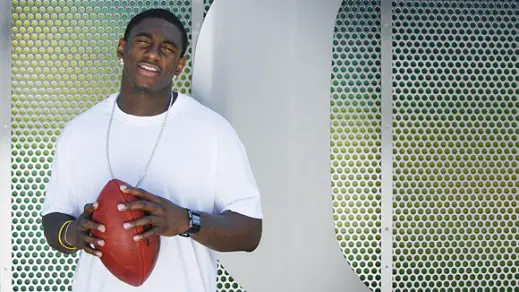
5-star blue chip recruit Cameron Colvin commit to Oregon live on ESPN, picking the Ducks over Michigan
On February 6, 2013 Brady Hoke will once again gather in front of the very media whose reporting on recruits he has criticized, to tout the recruits he just signed to his next recruiting class.
Scott Reed is a Staff Analyst for Duck Sports Authority>, to read more of his writing visit DuckSportsAuthority.com and become a member!
Related Articles:
Chip Kelly Update: Everything's Good Again ...
Chip Kelly Update: Wailing and Gnashing of Teeth
Shock and Awe -- The Oregon Ducks' Football Hangover Effect
Despite Lopsided Score, Georgia State "Never Stopped Believing"
Hope Springs Eternal for Ducks
Incompetent Pac-12 Officials: How Do You Miss ALL of THIS?
These are articles where the writer left and for some reason did not want his/her name on it any longer or went sideways of our rules–so we assigned it to “staff.” We are grateful to all the writers who contributed to the site through these articles.

